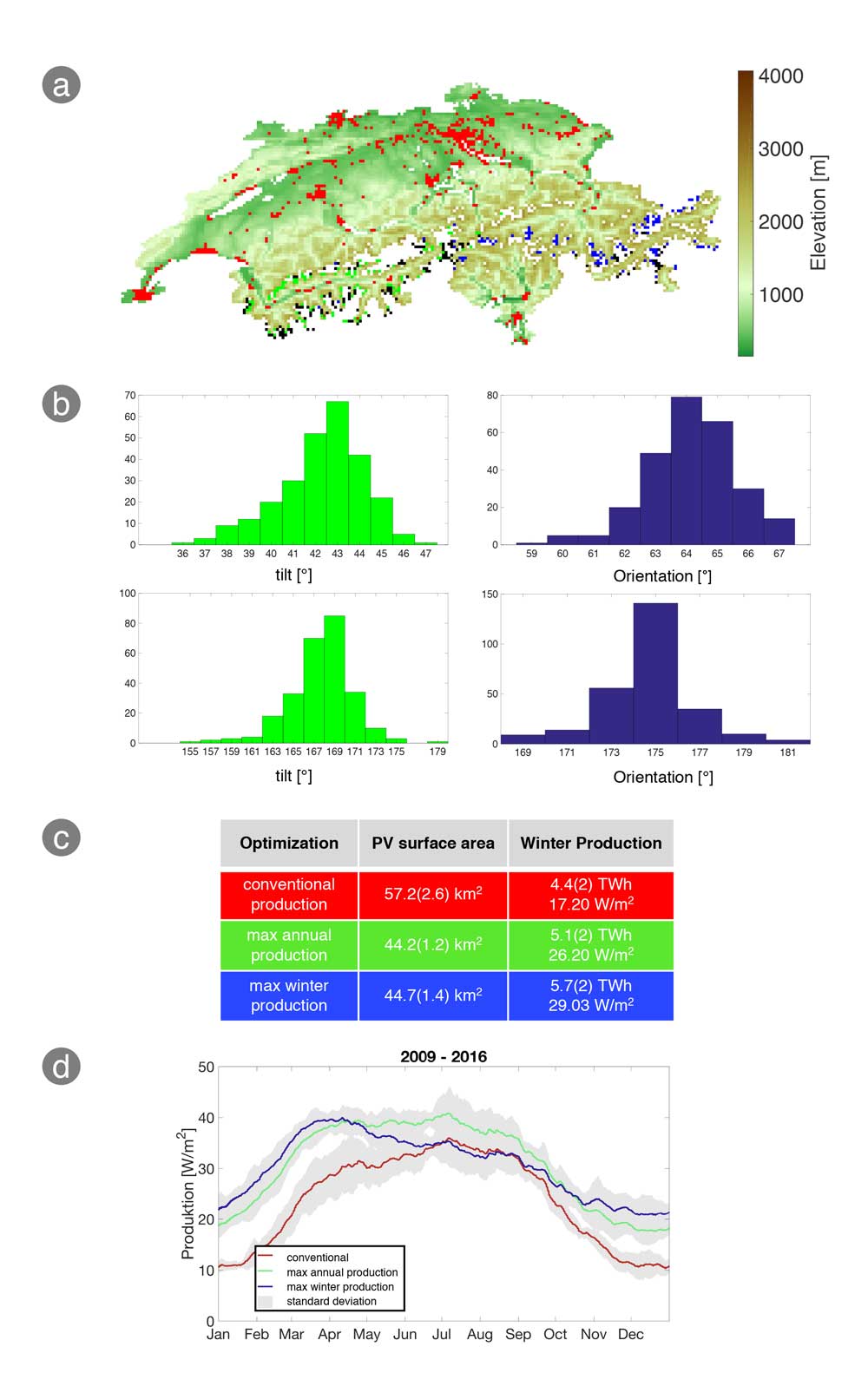
The mountains have traditionally provided hydropower to societies in mountains as well as in adjacent lowlands. Switzerland is an example where 60% of total electricity consumption is provided by hydropower. The (superior) potential of mountain regions for new renewables such as wind and solar (PV) is less explored. CRYOS has spearheaded research into mountain renewable energy and has shown for example that the snow cover adds significantly to PV potential at high elevation. The combined effect of snow on the ground, high elevation and low winter cloud cover can fill a significant portion of the winter energy gap that remains after hydropower generation (Kahl, Dujardin et al. 2019). Current research in the field includes the correct representation of terrain radiation and snow forward scattering for PV production.
Based on novel research into complex wind fields in mountains (Raderschall, Lehning et al. 2008), which is needed to understand drifting and blowing snow (Lehning, Lowe et al. 2008), CRYOS is also assessing the potential for wind energy in the Alps (Kruyt, Lehning et al. 2017). We focus on a correct description of the space – time dynamics of wind fields and in particular on a quantification of topographic wind patterns.

Kahl, A., J. Dujardin and M. Lehning (2019). “The bright side of PV production in snow-covered mountains.” Proceedings of the National Academy of Sciences of the United States of America116(4): 1162-1167.
Kruyt, B., M. Lehning and A. Kahl (2017). “Potential contributions of wind power to a stable and highly renewable Swiss power supply.” Applied Energy192: 1-11.
Lehning, M., H. Lowe, M. Ryser and N. Raderschall (2008). “Inhomogeneous precipitation distribution and snow transport in steep terrain.” Water Resources Research44(7).
Raderschall, N., M. Lehning and C. Schar (2008). “Fine-scale modeling of the boundary layer wind field over steep topography.” Water Resources Research44(9).